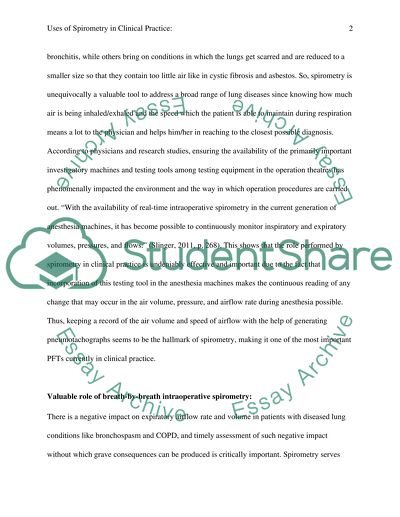Cite this document
(“Uses of Spirometry in Clinical Practice Essay Example | Topics and Well Written Essays - 1250 words”, n.d.)
Uses of Spirometry in Clinical Practice Essay Example | Topics and Well Written Essays - 1250 words. Retrieved from https://studentshare.org/health-sciences-medicine/1431380-explain-the-use-of-spirometry-in-clinical-practice
Uses of Spirometry in Clinical Practice Essay Example | Topics and Well Written Essays - 1250 words. Retrieved from https://studentshare.org/health-sciences-medicine/1431380-explain-the-use-of-spirometry-in-clinical-practice
(Uses of Spirometry in Clinical Practice Essay Example | Topics and Well Written Essays - 1250 Words)
Uses of Spirometry in Clinical Practice Essay Example | Topics and Well Written Essays - 1250 Words. https://studentshare.org/health-sciences-medicine/1431380-explain-the-use-of-spirometry-in-clinical-practice.
Uses of Spirometry in Clinical Practice Essay Example | Topics and Well Written Essays - 1250 Words. https://studentshare.org/health-sciences-medicine/1431380-explain-the-use-of-spirometry-in-clinical-practice.
“Uses of Spirometry in Clinical Practice Essay Example | Topics and Well Written Essays - 1250 Words”, n.d. https://studentshare.org/health-sciences-medicine/1431380-explain-the-use-of-spirometry-in-clinical-practice.


